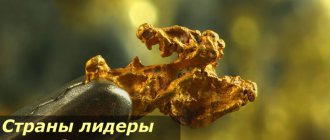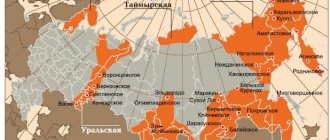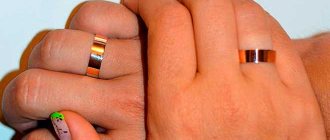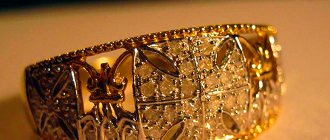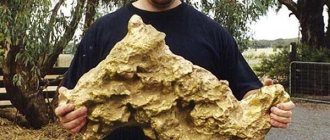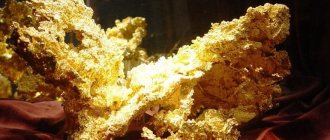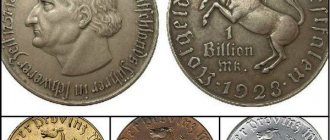Once upon a time, thousands of gold miners left their homes and rushed to foreign lands, hoping to get rich. In the mid-19th century, the so-called “gold rush” began, which continues to this day. Some of them went down in history.
Those who were lucky were then able to make their fortune. Sometimes it was possible to find nuggets of significant weight, by selling which one could provide for oneself for life. Interestingly, their true value was not always discovered.
So, young Conrad Reed found in a stream what he believed was a stone weighing almost 8 kg, which he used as a support for a door, but meanwhile it was a huge piece of gold. Amazing event.
But more often than not, the largest gold nuggets in the world have their own interesting history and do not go unnoticed.
Mephistopheles
“Mephistopheles” is an unusual nugget weighing 20.2 grams, stored in the collection of the Diamond State Fund of Russia. It was found by gold miners in one of the mines in Chukotka in mid-1944. The piece of gold got its name due to its unusual shape, reminiscent of the profile of the literary character in the book “The Tale of Doctor Faustus,” Mephistopheles. It was initially assumed that the nugget had undergone pre-treatment before entering the museum, but long-term research showed that its shape was natural and not artificial.
Golden heart
The nugget was found in Alaska by miner Nick Martinex from California. The heart-shaped piece of gold weighs 2.55 kilograms (90 ounces). "Heart of Gold" originally looked like a rock covered in a crust of crystals and minerals. When Martinex accidentally hit it with a pickaxe, the shell split open, revealing some of the gold ore. The nugget was carefully removed from the soil, peeled, and then sold to the American Mint. The man who discovered the "Golden Heart" says he is proud of his find and was very worried that the piece of precious metal would not break when it was cleaned with a chisel.
Since man learned to extract gold from the bowels of the planet, over 200,000 tons of pure precious metal have been extracted. If you melt it down, you will get an equilateral cube the height of an eight-story building.
Historical data
Surface pebbles rarely reached significant weight. They usually weighed a little over one hundred grams. Truly significant finds were discovered by man deep underground. Quite often, such stones, which were found at placer deposits, could weigh several kilograms.
The historical fate of large gold nuggets in many ways resembles the fate of diamonds. They were also given big names and titles, and most of these nuggets are in state museums and private collections. Throughout history, seekers and diggers have found about 10 thousand gold stones. Moreover, each weighs at least 10 kilograms. If you calculate the total weight, you get a fairly significant figure.
A large number of these pieces were melted and used for various purposes:
- To create jewelry;
- For the manufacture of equipment;
- For other industrial purposes.
But the last significant fossils, which were found over the past decades, can be seen in museums as exhibits. The first largest nugget of gold was mentioned in the records of Arab chroniclers. It was discovered in the territory of modern Afghanistan. If you believe the ancient descriptions found in the chronicles, then its parameters were equal to two cubits. If anyone doesn’t know, the cubit is an ancient unit of measurement, which is about forty centimeters.
Scientists carried out mathematical calculations and determined that, in accordance with modern units of measurement, the mass of this gold stone can be from 2 to 2.5 tons. If the mentions of the chroniclers are not a simple myth or legend, then this nugget can rightfully be considered the largest in the whole world.
One book, which tells about the long history of this mineral, talks about gold nuggets that were found in Brazil. According to preliminary data, their mass was about 200 kilograms. But since experts have not confirmed this statement, one cannot be completely sure that it is true.
It is known for sure that until the 11th century history does not know such significant finds.
Today, scientists consider the largest nugget to be a piece of noble metal called the Holtermann Plate.
It was found on a huge pile of quartz, which weighed about 250 kilograms. The mass of pure gold was 93 kilograms. This nugget was found in Australia in 1872.
"Holterman Plate"
Distribution by country
Australia is the leader in the number of such successful excavations. In 1869, a nugget named the Desired Stranger was presented to the people, who was found right on the road. His weight was 70 kilograms. In the same state there is a gold stone whose mass exceeds 54 kilograms. This is a find called the Shiny Barkley.
"Welcome Stranger"
A large number of gold deposits are located in Japan, the land of the rising sun. Numerous large objects were not found there, but nature decreed that in 1901 a nugget named Japanese was found. The largest gold nugget, which is the only one in Japan, weighs 71 kilograms.
America also boasts a large amount of gold reserves. The most famous is the precious stone, which was not discovered in a mine. He was found in a grave. An American was digging a grave for his dead friend. While digging, the American encountered a stone, which today is called Oliver Martin. The owner of this exhibit quite often put it on public display in the largest cities of America.
"Oliver Martin"
Many noble reserves are located in the vast expanses of the Russian Federation. Of course, the items found in Russia cannot compare with the huge stones that are found in Australia, but even today you can find items there that can weigh up to about 30 kilograms. Such detections are evidenced by numerous videos and photo reports.
"Big Triangle".
The first large nugget, which is by far the most significant in Russia, was excavated in the Urals in 1842. It was called the Great Triangle because of its great resemblance to this geometric figure. His weight was 36 kilograms. This triangle is also known throughout the world because it is the largest piece of gold to date. All other items that were located on the territory of other states were melted down or processed.
Then its value was 28,146 rubles. The cost of the "Big Triangle" today is many times higher.
The world's richest collection of nuggets is located in the Diamond Fund of the Russian Federation.
In 1967, 100 nuggets with a total weight of 200 kilograms were presented at the Foundation’s international exhibition. Among them, the most beautiful and unique were chosen: “Mephistopheles” (20 g), “Horse Head” (14 kg), “Camel” (9.3 kg), “Hare Ears” (3.34 kg).
The “Mephistopheles” nugget is interesting in its shape.
Despite its light weight, it arouses the admiration of visitors: it represents the impeccable shape of the Mephistophilus profile.
When it was discovered, prospectors argued: it was a gold product or a natural nugget.
After an analysis of the structure, it was decided that this was still a natural creation, and not the work of man.
“Golden Heart” (20 kg)
Found by Nick Martinex in Alaska, it is also unique, since when it was found it did not look gold at all - it was disguised with a black mineral film, under which it was difficult to guess the precious metal. The Heart of Gold nugget is recognized as the fifth largest nugget found in Alaska in the US gold reserve.
bunny ears
In the Urals, near the small settlement of Leninsk, one of the largest gold mines in Russia, discovered under Alexander I, operated for many years. At the beginning of 1935, when the gold mine was preparing to close, a lonely prospector Pyotr Simonov accidentally discovered a piece of gold in the ground, the weight of which exceeded 3.3 kilograms. But the nugget was considered unique not because of its mass, but because of its shape. It resembled a hare's head with long ears.
According to the laws of that time, such a large piece of gold could not remain the property of Simonov and he had to give it to the state. The nugget was placed in the royal treasury, from where it later ended up in the National Museum of Mineral Resources of Russia. The replica of “Hare Ears” is kept in the local history museum of the Chelyabinsk region.
Rabbit ears 3.344 kg
Hare Ears
its name because of its shape, similar to the head of this animal. It was found by Pyotr Simonov in 1935, near the Leninsky mine.
Peter decided to dig a hole right in the middle of the road, in front of the workshop door, and tried to break through the frozen layer of earth. Two girls, seeing how he was suffering, decided to help him, but then ran away to do their own thing.
When the workers left the workshop, they saw Simonov, who was sitting among the clods of earth, in them lay a huge nugget of an unusual shape. It appeared among rock crystal and calcite crystals and reached extraordinary sizes.
Experts found out that this is high quality gold, 932 samples. The dimensions of the “ears” are 6 and 7 cm, their thickness is about 2 cm.
Camel
“Camel” is an unusual gold nugget, the shape of which resembles the outline of the body of the animal of the same name. It was found by Russian miners in the depths of a mine in Kolyma in 1947. The weight of the piece of precious metal was 9,300 grams. It was not melted down, but transferred to the collection of the Diamond State Fund, where it became one of the main exhibits. All visitors to the annual exhibition can look at the rare and unique nugget.
Horse head
In 1936, a large gold nugget of a strange shape, reminiscent of a horse's head, was found in one of the Ural mines. The elongated piece of precious metal weighed 13,700 grams. It was transferred to the collection of the Diamond State Fund of Russia. It is located next to another uniquely shaped “Dolphin” nugget. This piece of gold was discovered on the banks of the Lena in one of the largest gold deposits, Bodaibo. “Dolphin” is slightly inferior to “Horse Head” in weight. Its weight is 10,040 grams.
Gold nuggets: a review of the largest finds
"Holterman Plate"
The largest gold nugget in the world was discovered in 1872 in Australia. The deposit of this “giant” was the Hill End mine. The length of the find was 144 centimeters, width – 66 centimeters, thickness – 10 centimeters. The nugget was given the name “Holterman Plate”. Its mass was 285 kg, of which pure gold was about 83.3 kg. This piece of gold was used to be melted down and made into jewelry.
Nugget "Holterman Plate"
"Welcome Stranger"
The Welcome Stranger is the second largest gold nugget after the Holtermann Slab, which weighed 70.9 kg. It was also found in Australia and was melted down.
Gold Nugget "Welcome Stranger"
"Big Triangle"
“Big Triangle” - a piece of gold weighing 36 kg was found on October 8, 1942 in the Southern Urals in the Miass region. According to experts, in 1842 its cost was 28,146 rubles. This copy has survived to this day, but its price has become much higher. Today it is stored in the Diamond Fund of the Russian Federation.
Russia is the owner of the richest collection of nuggets in the world. The exhibition, held in Moscow in 1967, included at least a hundred finds, the total weight of which was more than 200 kg. Such nuggets as “Hare Ears” (3.34 kg), “Camel” (9.3 kg), “Horse Head” (14 kg) became the largest specimens.
The Mephistopheles nugget is of greatest interest among visitors to the Diamond Fund . Its light weight of 20.25 grams is compensated by its unique appearance, reminiscent of the profile of an evil spirit in Renaissance mythology. Disputes about its formation subsided several years after the unique discovery. Some experts believed that nature was unable to create such an image. However, many studies have shown the absence of artificial processing of this ingot.
You may be interested in: Which gold is more expensive: white or yellow?
"Heart of Gold" is another large nugget found in Alaska. It became the fifth largest among all the ingots found in the state of Alaska. The initial impression of the find was disappointing. It looked more like a piece of black galli, because it was covered with a crust of minerals.
It is important to know that mining native gold without special permission is prohibited by law. All such operations are criminally punishable. If gold was found by chance, it is considered a “find”, which must be given to the state, receiving 20% of its value minus income tax.
Legal ownership only applies to bank and jewelry gold. It is also allowed to buy it, give it as a gift and perform other legal transactions with it.
Royal gem
The "Iron Jewel" or "Royal Jewel" nugget is a single crystalline gold. It was discovered in a piece of quartz rock in 1992 at mines owned by the Sonora Mining Company. To avoid damaging the gold ore, the quartz shell was removed using hydrofluoric acid. The mass of the piece of precious metal was 16,400 grams. The nugget was donated to the Ironstone Vineyards Museum, which is located in the center of California. It has become a symbol of the state, which became famous throughout the world for the “gold rush” of the 19th century.
Normandy Nugget
Another name for the nugget is “Solid Normandy”. It was found in 1995 by miners working at a mine near the town of Calgourie (Australia). According to the data recorded in their diaries, the mass of a single piece of gold was 25.5 kilograms. After being melted down, it lost about 20% of its weight. The nugget was sold to the management of Newmont Gold Corporation. The gold bar, obtained after melting down a block of precious metal, is in the private collection of the Perth Mint.
Hand of Faith
A large piece of gold ore was found in early 1980 in the state of Kingover (Australia) using a metal detector. Its owner was the owner of a private gold mining enterprise, Kevin Hillier. The Hand of Faith weighed 27.6 kilograms and contained 870 ounces of pure gold. The nugget did not stay long in Kevin Hillier's collection. Soon he received an offer to sell it to the director of a famous gambling establishment in Las Vegas. The cost of the transaction remained secret. Today you can see the “Hand of Faith” in the museum located on East Fremont Street in the old Las Vegas area.
In Japan, a very popular show involves pulling a 12-kilogram gold bar through a small hole with your hands. The winner receives it as a reward.
Hand of Fate, 27.2 kg
It was found in Australia in 1980. There is a story online from Ellie Hiller, who and her family made this significant find. She, her husband Kevin and their 4 children decided to travel around Australia by bus. They sold everything they had, quit their jobs, and hit the road, intending to stay in one place for no longer than 3 months.
In September 1980, they took metal detectors and went looking for gold, as they did every day. And Kevin was able to find the nugget. She and Ellie tried to dig it out of the ground, but it only grew in size. It took a long time to dig; somehow they loaded 27 kg of gold into the car.
They decided to call it " Hand of Fate " because... it is like a blessing hand. Its other name is “ Hand of Faith ”. It was found in Victoria, near the town of Kingauer. He is one of the record holders, i.e. the largest nugget of this precious metal found using a metal detector. It was purchased by an American casino and is now on display in its lobby in downtown Las Vegas.
Big triangle
The largest gold nugget found in Russia in 1842. It was dug up by Nikifor Syutkin, an employee of the Ural gold mining company, at a depth of 3.5 meters. The weight of the block of precious metal was 36,200 grams, of which 91% was pure gold. The nugget was named “Big Triangle” because of the shape of the ore piece. From the moment the block is extracted, it is considered the property of the Russian Empire. It was placed in the collection of the Diamond State Fund next to large precious stones and the largest platinum nuggets found in the country.
Large triangle, 36 kg
Its weight is 2 pounds, 7 pounds and 92 spools, if converted to our scale measure - 36.2 kg. It was found on October 26, 1842 by craftsman Nikifor Syutkin.
The placer in this place has already been worked out, only the place under the factory remains. It was dismantled, and while working, Syutkin came across a nugget, which was called the “ Big Triangle ” for its shape. Now it is stored in the Russian Diamond Fund.
The fate of Nikifor himself was not very successful. Syutkin previously received 3 kopecks a day. For the nugget he found, he was entitled to 15 kopecks per spool. The “Big Triangle” was valued at 28,146 rubles, of which Nikifor should have received 1,266 rubles 60 kopecks, a huge amount for such a person.
The head of the Ural mining assurances, fearing that he would immediately waste everything, gave him 66 rubles and 60 kopecks, and put the rest in the bank at interest. Nikifor immediately started a revelry with his comrades. Then he began to beg for money in every way. The bosses got tired of brushing him off and gave him all the money.
Syutkin continued to drink, his binge lasted almost his entire life, interrupted only at those moments when he was put in a “cold” cell on bread and water or was flogged in the mine office. He died in poverty, forgotten and despised by everyone.
Pepita Kanaa
A piece of gold weighing 60.5 kilograms was found in Brazil in 1983 by a miner with many years of experience, Julio Filo. When extracting a nugget from the depths of the Serada-Palada mine, it was accidentally split into two unequal parts. The ore was bought by a coin minting company. A huge coin was smelted from it, which was called Pepita Kanaa. The weight of the product was 52 kilograms. 8.5 kg of impurities were sifted out during the process of melting down a piece of gold. The coin was transferred to the monetary museum of the State Bank of Brazil, where it remains to this day as the main exhibit. Anyone can look at this masterpiece of the mint.
Nugget Henry Share
Despite the fact that the “gold rush” came to an end a long time ago, gold miners do not stop digging in the earth in search of precious ore. In 2021, Australian miner Henry Dole decided to start excavations near the town of Kambalda. In September, luck smiled on him. In one of the walls of a nickel mine, he discovered a rich deposit of gold. After the explosion, the floor of the adit was strewn with pieces of precious metal, the largest of which weighed 90 kilograms. Another nugget had a mass of 65,200 grams. After melting it down, a 45-kilogram ingot was obtained. It is unknown where the nuggets found by Dole went, but in the place where the lone miner was excavating, a mine was built for the extraction of minerals.
What is a gold nugget?
Gold nuggets are large pieces of native metals. Experts have not yet come to a consensus on which piece of gold should be called a nugget.
Some professionals call for ingots weighing more than 1 kg to be called nuggets, while others are inclined to think that a piece measuring about 4 mm rightfully deserves such a name if nature has endowed it with a unique shape and bright shine.
It was the nuggets found that became the beginning of people’s acquaintance with precious metals. They marked the beginning of the history of using gold as a material for making jewelry and other items.
The cost of nuggets is determined by their size. The larger the piece, the more expensive the price will be. Thus, the average cost of Australian nuggets ranges from $18 per gram if it is less than 6 grams, and $30 per gram for larger specimens (from 8 to 16 grams).
When determining the value of a nugget, important importance is given to such a factor as its shape. The original version made of pure gold costs several times more than a rolled copy mined from placers. Therefore, the search for such finds is justified.
You may be interested in: At what temperature does gold melt and can you melt it at home?
Gold mining often brings good luck in the form of nuggets found. If we compare gold with other metals, then its concentration in the soil is much less than the same iron, copper, lead and others. However, scientists have found that the noble metal is also present in plants and living organisms.
Welcome Stranger
“The Welcome Stranger” is one of the largest gold nuggets found in Australia by prospectors John and Richard in one of the private mining mines. The weight of a piece of precious metal is almost 70 kilograms. The mass of the nugget was so large that there were no scales in the village to weigh it and determine the exact weight. A piece of ore was divided into several parts and sent to England. There it was melted down into the largest bar of gold and placed in a public bank in London.
Welcome Stranger, 70.9 kg
This nugget was found in 1869, in Australia, Victoria, in the city of Moliagul, 200 km from Melbourne. The lucky ones were prospectors John Dizon and Richard Oates.
One day Dizon was loosening the ground when he suddenly discovered something very hard. As a person associated with gold, his first thought was that it was a nugget. But reality exceeded all his expectations. Dizon dug up such a huge lump of gold that he could not move it. Moreover, he was not immediately able to find out the weight of the find, because... it was difficult to find scales where they could weigh him.
Unfortunately, this huge nugget, which was called the " Welcome Stranger ", has not survived. It was crushed into pieces, breaking off one piece after another over the course of 5 hours. Not even a photograph of this unique nugget remains. Where it was found, a pillar was erected on which you can read the names of 2 miners; they were able to earn 9,563 pounds.
Holtermann plate
The “Holtermann Plate” is the largest gold nugget on the planet, which was extracted from the depths of the Earth in the fall of 1872. Gold miner Holterman and his colleague Hugo Beyens found a piece of gold weighing 235 kilograms. After melting the nugget, it turned out that it contained only 83 kilograms of pure gold ore. The rest of the piece consisted of quartz, iron and other impurities. However, despite this, the “Holterman Plate” is recognized as the largest gold nugget included in the Guinness Book of Records. Unfortunately, the piece of precious metal has not survived to this day. All information about him was obtained by scientists from entries in the personal diary of Hugo Beyens.
